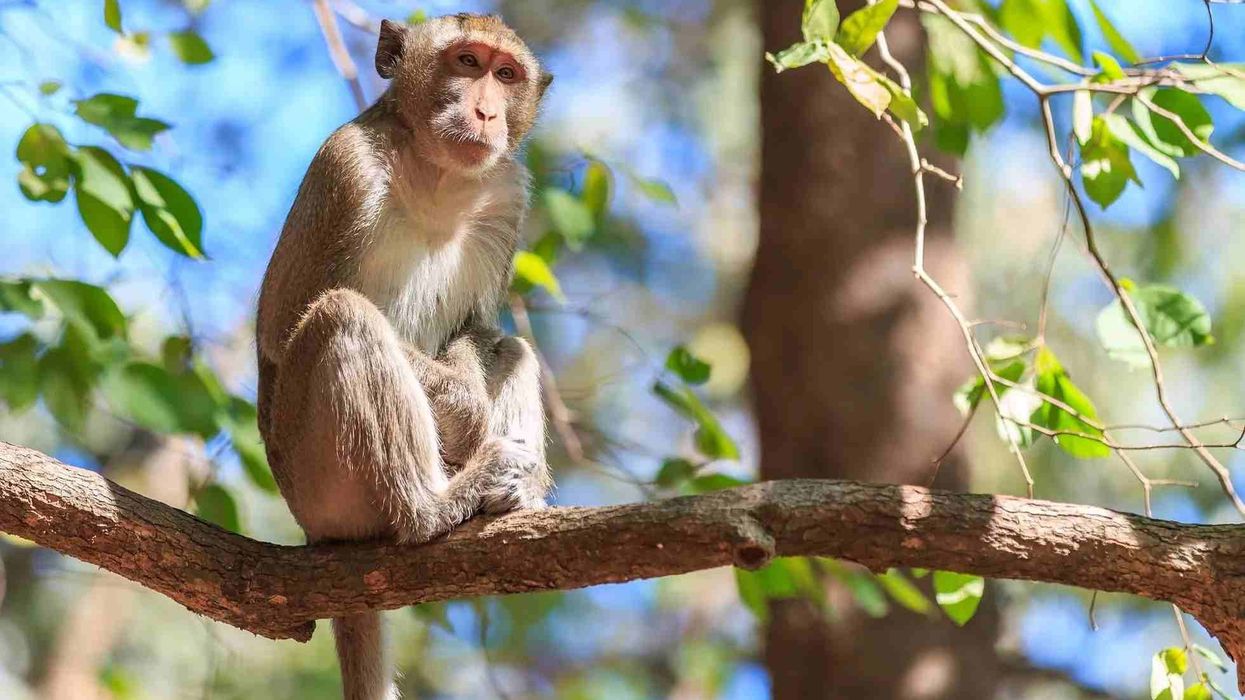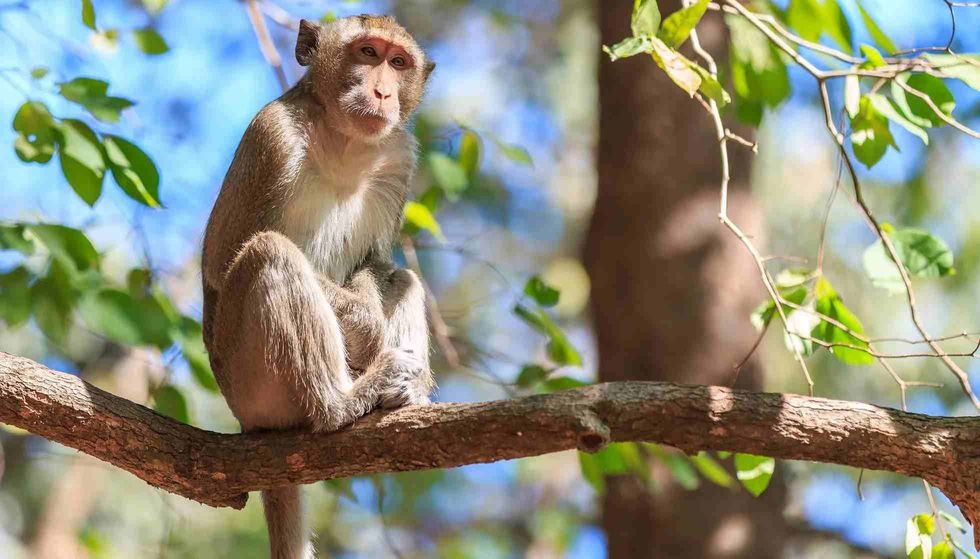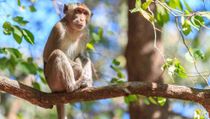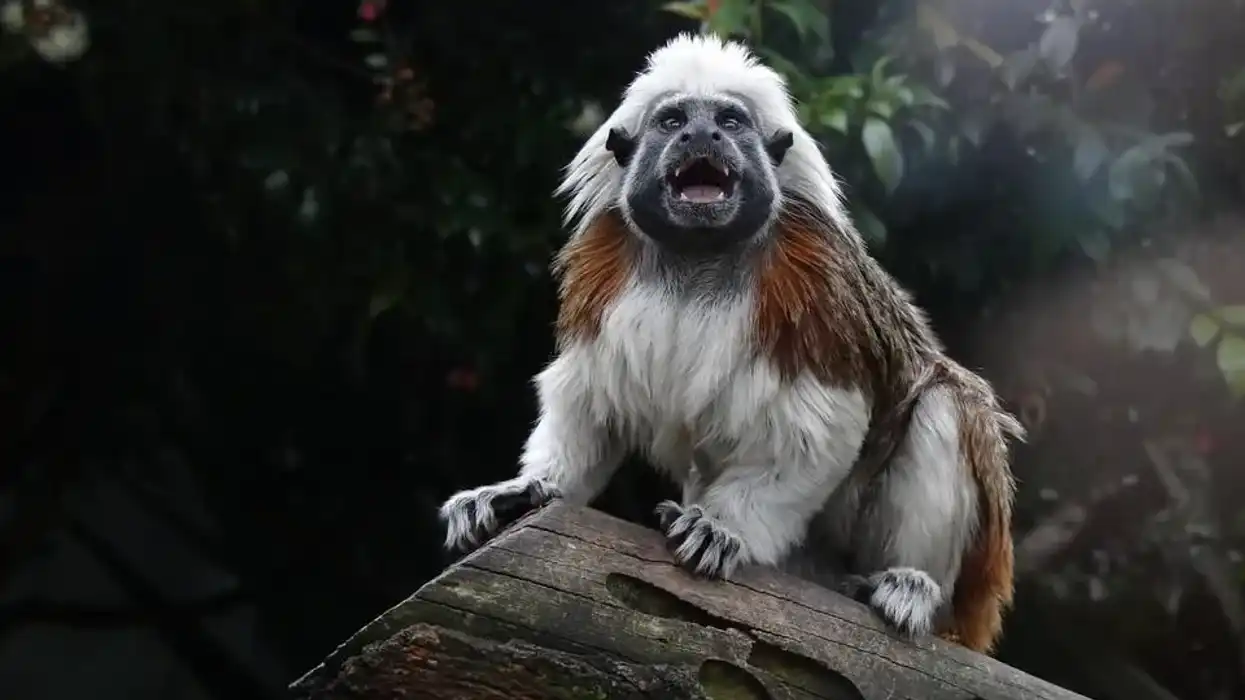Fun Crab-eating Macaque Facts For Kids
Content
- What type of animal is a crab-eating macaque?
- What class of animal does a crab-eating macaque belong to?
- How many crab-eating macaques are there in the world?
- Where does a crab-eating macaque live?
- What is a crab-eating macaque's habitat?
- Who do crab-eating macaques live with?
- How long does a crab-eating macaque live?
- How do they reproduce?
- What is their conservation status?
- What do crab-eating macaques look like?
- How cute are they?
- How do they communicate?
- How big is a crab-eating macaque?
- How fast can a crab-eating macaque move?
- How much does a crab-eating macaque weigh?
- What are the male and female names of the species?
- What would you call a baby crab-eating macaque?
- What do they eat?
- Are they aggressive?
- Would they make a good pet?
- Did you know...
- How long is a crab-eating macaque's tail?
- How can you tell the difference between male and female crab-eating macaques?
The crab-eating macaque is also referred to as the long-tailed macaque or the cynomolgus monkey. The scientific name for the species is Macaca fascicularis. The word macaca comes from the Portuguese word meaning monkey, originally taken from Ibinda, the West African language. The word fascicularis is derived from the Latin word for small band or stripe.
Crab-eating macaques have 10 subspecies which include the long-tailed macaques, dark crowned long-tailed macaques, as well as the Nicobar long-tailed macaques. Each subspecies of the crab-eating macaque has a slightly different physical appearance, habitat, and diet. Crab-eating macaques are also related to other macaques within the genus macaca, such as the pig-tailed macaque, rhesus macaque, and the Japanese macaque.
Crab-eating macaques live in the riverine and coastal forests in Southeast Asia. The native range of this species includes Myanmar, Thailand, Malaysia, Vietnam, Borneo, Cambodia, Philippines, Laos, and Indonesia. Besides these regions, the primate species has also been introduced in certain countries where it is being considered an invasive species today.
Read on to find out more facts about the crab-eating macaque species. For more interesting animal facts, check out our articles on the chimpanzee and the coquerel's sifaka.
Crab-eating Macaque Interesting Facts
What type of animal is a crab-eating macaque?
The crab-eating macaque is a species of macaque also referred to by the common name long-tailed macaque or the cynomolgus monkey. There are 10 subspecies of this macaque, including the long-tailed macaques, dark crowned long-tailed macaques, as well as the Nicobar long-tailed macaques.
The long-tailed macaque is also related to other macaques within the genus Macaca, such as the pig-tailed macaque, rhesus macaque, and the Japanese macaque. The scientific name for the species is Macaca fascicularis.
What class of animal does a crab-eating macaque belong to?
The crab-eating macaque, Macaca fascicularis, belongs to the class Mammalia, order primates, family Cercopithecidae, and genus Macaca. The correct crab-eating macaque pronunciation of the word 'macaque' is 'muh·kaak'.
How many crab-eating macaques are there in the world?
It is estimated that there are about 2.5 million crab-eating macaques living in the wild.
The species is, however, listed as Vulnerable by the International Union for Conservation of Nature Red List of Threatened Species due to several human activities such as hunting, logging, and urbanization which has resulted in the loss of their habitat.
They are also considered to be an invasive species and pests in several agricultural activities, resulting in them being killed.
Crab-eating macaques are also experimented on in research labs of Great Britain and the United States due to their susceptibility to human diseases.
Where does a crab-eating macaque live?
The crab-eating macaque lives in the riverine and coastal forests in Southeast Asia. The native range of the crab-eating macaque, Macaca fascicularis, includes regions of Myanmar, Thailand, Malaysia, Vietnam, Borneo, Cambodia, Philippines, Laos, and Indonesia.
Besides these regions, the crab-eating macaque, Macaca fascicularis, has also been introduced in certain countries.
Its introduced range includes Hong Kong, New Britain, Taiwan, New Caledonia, Irian Jaya, Solomon Islands, Papua New Guinea, Fiji, New Ireland, Nauru, Pohnpei, Mauritius, Vanuatu, Tonga, Anggaur Island in Palau, and Tonga. In their introduced range, long-tailed macaques are considered to be a threat to the native species.
What is a crab-eating macaque's habitat?
The crab-eating macaque lives in the riverine and coastal forests in Southeast Asia. Crab-eating macaques show a preference for warm, humid climates that can be found in forests like mangroves, coastal forests, tropical rain forests, swamps, deciduous forests, and bamboo forests that receive ample rainfall annually.
Crab-eating macaques occupy spaces near rivers or water bodies so that they can easily access a source of sustenance. Among the wide variety of forest areas occupied by the long-tailed macaque species, swamp forests have the highest number of species.
Who do crab-eating macaques live with?
Crab-eating macaques live in social groups that can have anywhere between 3-30 group members. Their societies are matrilineal and typically dominated by females.
Social groups consist of main females, their offspring, and males. Males usually leave their natal groups once they reach puberty and look for new social groups. There is a strict dominance hierarchy existing within groups among males and females.
For males, this dominance hierarchy is based on their size, age, and their ability to fight. Males that have a higher rank within the group also tend to mate with higher-ranking females.
While intergroup interactions are usually avoided, when they do take place, they are often aggressive. The resident group typically chases the non-resident group out of the area.
Cooperation within the social group is imperative for the survival and protection of the crab-eating macaque. These animals usually socialize and forage during the daytime and then huddle together during the night to remain warm. Social groups of crab-eating macaques occupy one tree at a time and will fiercely protect their territory from threats.
Various types of behaviors help to maintain cohesion and social order within the group. Grooming is one such behavior.
Female crab-eating macaques ranking lower in the group hierarchy will groom higher-ranking females. This enables the lower-ranking females to obtain a greater level of support during any aggressive interactions, far lesser harassment, as well as access to the limited resources of the group with which they can survive.
How long does a crab-eating macaque live?
Not much is known about the life span of the macaque (crab-eating). It is suspected that crab-eating macaques have a life span of about 15-30 years, similar to the life span of other members of the genus Macaca. When raised in captivity, they can live for up to 30 years.
Males generally live for a lower number of years when compared to females as they live more precariously in the wild. Their life span can be cut short due to a number of human activities that threaten their existence as well as aggressive behaviors of males when they fight for their status position, predation, and injury.
How do they reproduce?
The crab-eating macaque reproductive season tends to coincide with the rainy season in summer (May to July). Females achieve sexual maturity by four years of age while males reach sexual maturity by the time they are six years old.
Males usually join new groups or make bachelor groups by the time they reach puberty. Females typically give birth every two years, although higher-ranking females can give birth every year.
The gestation period in this species lasts for six to nine months and females usually give birth to just one infant, born with black fur. The mother is the primary caregiver and teaches the infant communication, grooming, and survival skills. Mothers also nourish and protect infants.
Infants usually acquire their adult coloration by the time they complete one year of life. The weaning period for this species is 420 days.
What is their conservation status?
According to the International Union for Conservation of Nature Red List of Threatened Species, the long-tailed macaque is listed as a Vulnerable species. This IUCN Red List status is the result of several human activities such as hunting, logging, and urbanization which have resulted in the loss of their habitat.
Their habitat is also threatened by oil drilling and several harvesting plans.
They are also considered to be an invasive species and pests in several agricultural activities, resulting in them being killed.
Crab-eating macaques are also experimented on in research labs of Great Britain and the United States due to their susceptibility to human diseases and the physiology they so closely share with humans. They are also captured and sold as pets in some regions.
Some regions protect these species while others offer them no protection. There are two sanctuaries, nine reserves, and nine national parks for the protection of this species.
In Malaysia, they are protected in urban forests and parks. Crab-eating macaques have a greater chance of survival in regions where they are considered sacred, such as Bali. Because they are considered to be pests in many agricultural activities, many governments have not initiated conservation efforts for this species.
Crab-eating Macaque Fun Facts
What do crab-eating macaques look like?
The bodies of these animals are dark brown with light golden brown tips. A light gray underpart with dark gray or brown tail is common.
Their crown hairs can form short crests along the midline of the crab-eating macaque skull and are directed backward. Their feet and ears have black skin while light grayish pink skin is observed on the muzzle. Their eyelids often have prominent white markings while their ears have white spots.
Sexual dimorphism can be seen in the species of crab-eating macaques, Macaca fascicularis. Males usually weigh more than females.
While male crab-eating macaques weigh between 11-20 lb (5-9 kg) on average, a crab-eating macaque female will weigh between 6.6-13.2 lb (3-6 kg). Males also have bigger canine teeth and mustaches while females having beards. Crab-eating macaques of both genders have cheek whiskers and cheek pouches that they use to store food.
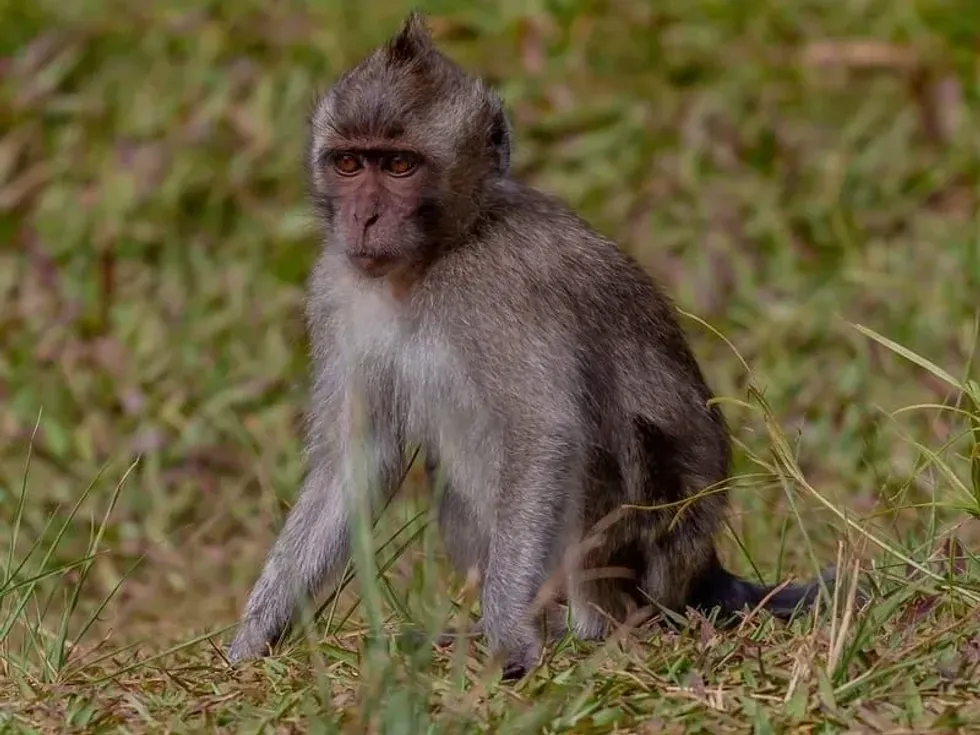
How cute are they?
These monkeys are cute, especially as infants but they look anything but cute when they become aggressive.
How do they communicate?
A variety of vocalizations as well as calls are used for communication within this species. Visual signals like body posture and facial expressions are also an important means of communication in the species.
Crab-eating macaques express aggression by baring their teeth to show their canines and incisors as well as pulling their nose and ears back. They also bounce on branches aggressively and make loud noises to keep possible threats away.
How big is a crab-eating macaque?
The average height of a crab-eating macaque is 15-22 in (38-55 cm). The long-tailed macaque's tail is longer than its body, measuring between 16-26 in (40-65 cm).
This long tail is used for balance as the crab-eating macaque monkey jumps from tree to tree in its natural habitat. The long-tailed macaque, Macaca fascicularis, can jump great distances of up to 16 ft (5 m) with the balance provided by its tail.
How fast can a crab-eating macaque move?
The crab-eating macaque can move at a top speed of 30 mph (8.3 kph), jumping from tree to tree within the natural habitat.
How much does a crab-eating macaque weigh?
There is a difference in weight among the male and female members of this species. While the average weight of the crab-eating macaque is 7-20 lb (3-9 kg), male crab-eating macaques usually weigh more. While male crab-eating macaques weigh between 11-20 lb (5-9 kg) on average, a crab-eating macaque female will weigh between 6.6-13.2 lb (3-6 kg).
What are the male and female names of the species?
There are no special names for males and females of the species. Both males and females are called crab-eating macaques.
What would you call a baby crab-eating macaque?
A baby crab-eating macaque is called an infant.
What do they eat?
The name crab-eating macaque does not actually come from a diet that predominantly includes crabs. These omnivores are opportunistic feeders and will eat food based on regional as well as seasonal availability.
Between 60-90% of their diet consists of fruits and seeds. Besides this, they mostly eat leaves, flowers, roots, and bark.
They also feed on vertebrates including bird chicks, lizards, fish, invertebrates, and bird eggs. Some are known to feed on crabs and other crustaceans, especially in mangrove swamps of Indonesia where they swim and dive for these species.
In regions that have cultivated fields nearby, these animals feed on young dry rice, cassava leaves, rubber fruit, taro plants, mangoes, coconuts, and other crops.
These macaques are considered a threat to nesting female birds because they eat the eggs as well as chicks of endangered forest birds.
Are they aggressive?
Crab-eating macaques display a degree of cooperation among members of a social group, but intergroup interactions are usually aggressive. The replacement of high-ranking males by other males in a group also takes place following aggressive activities. These animals can also be aggressive towards humans if they are frightened or agitated.
Would they make a good pet?
No, these wild animals would not make good pets for multiple reasons. They can be aggressive towards humans if they are frightened or agitated and develop health as well as behavioral problems due to stress in artificial home environments.
They are also dangerous for humans because they can carry diseases such as the herpes B virus that are considered to be fatal for humans.
Did you know...
The crab-eating macaques, Macaca fascicularis, belong to the Old World monkeys which diverged 55 million years ago from the New World monkeys. These Old World monkeys differ from New World monkeys in terms of their physical characteristics. Old World monkey species are characterized by nostrils that face downwards, opposable thumbs, narrower noses, and a lack of prehensile tails.
The species of long-tailed macaque, Macaca fascicularis, has the highest arboreality among all macaques. They usually only come to the ground within 16 ft (5 m) of a river edge close to their tree.
On 24 January 2018, two clones of crab-eating macaques were created by scientists in China through the use of the complex DNA transfer method. The cloned crab-eating macaques, given the names Zhong Zhong and Hua Hua, were the first cloned primates created by making use of the somatic cell nuclear transfer method.
They play a crucial role in seed dispersal and are preyed upon by larger animals like crocodiles, birds of prey, tigers, and snakes.
How long is a crab-eating macaque's tail?
The tail of the long-tailed macaque is longer than its body, measuring between 16-26 in (40-65 cm). This long tail is used for balance as the crab-eating macaque monkey jumps from tree to tree. The long-tailed macaque, Macaca fascicularis, can jump great distances of up to 16 ft (5 m) with the balance provided by its tail.
How can you tell the difference between male and female crab-eating macaques?
Sexual dimorphism can be seen in the species of crab-eating macaques, Macaca fascicularis. Males usually weigh more than females.
While male crab-eating macaques weigh between 11-20 lb (5-9 kg) on average, a crab-eating macaque female will weigh between 6.6-13.2 lb (3-6 kg). Males also have bigger canine teeth and mustaches while females have beards. Crab-eating macaques of both genders have cheek whiskers and cheek pouches that they use to store food.
Here at Kidadl, we have carefully created lots of interesting family-friendly animal facts for everyone to discover! Learn more about some other mammals from our tarsier facts and uakari facts pages.
You can even occupy yourself at home by coloring in one of our Crab-eating Macaque coloring pages.
We Want Your Photos!
More for You
See All
Bachelor of Arts specializing in English Literature

Akinwalere OlaleyeBachelor of Arts specializing in English Literature
As a highly motivated, detail-oriented, and energetic individual, Olaleye's expertise lies in administrative and management operations. With extensive knowledge as an Editor and Communications Analyst, Olaleye excels in editing, writing, and media relations. Her commitment to upholding professional ethics and driving organizational growth sets her apart. She has a bachelor's degree in English Literature from the University of Benin, Edo State.
Disclaimer
1) Kidadl is independent and to make our service free to you the reader we are supported by advertising. We hope you love our recommendations for products and services! What we suggest is selected independently by the Kidadl team. If you purchase using the Buy Now button we may earn a small commission. This does not influence our choices. Prices are correct and items are available at the time the article was published but we cannot guarantee that on the time of reading. Please note that Kidadl is a participant in the Amazon Services LLC Associates Program, an affiliate advertising program designed to provide a means for sites to earn advertising fees by advertising and linking to Amazon. We also link to other websites, but are not responsible for their content.
2) At Kidadl, we strive to recommend the very best activities and events. We will always aim to give you accurate information at the date of publication - however, information does change, so it’s important you do your own research, double-check and make the decision that is right for your family. We recognise that not all activities and ideas are appropriate for all children and families or in all circumstances. Our recommended activities are based on age but these are a guide. We recommend that these ideas are used as inspiration, that ideas are undertaken with appropriate adult supervision, and that each adult uses their own discretion and knowledge of their children to consider the safety and suitability. Kidadl cannot accept liability for the execution of these ideas, and parental supervision is advised at all times, as safety is paramount. Anyone using the information provided by Kidadl does so at their own risk and we can not accept liability if things go wrong.
3) Because we are an educational resource, we have quotes and facts about a range of historical and modern figures. We do not endorse the actions of or rhetoric of all the people included in these collections, but we think they are important for growing minds to learn about under the guidance of parents or guardians.
